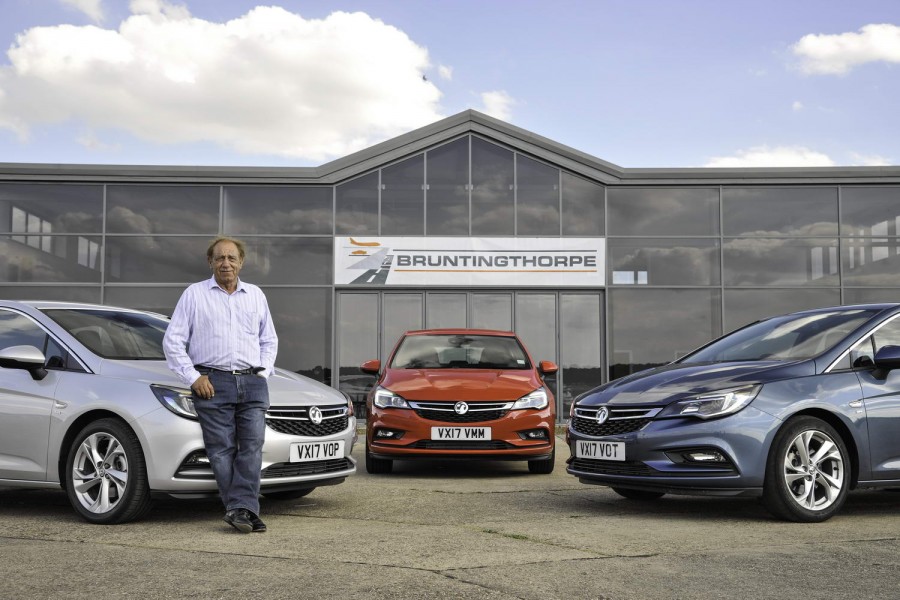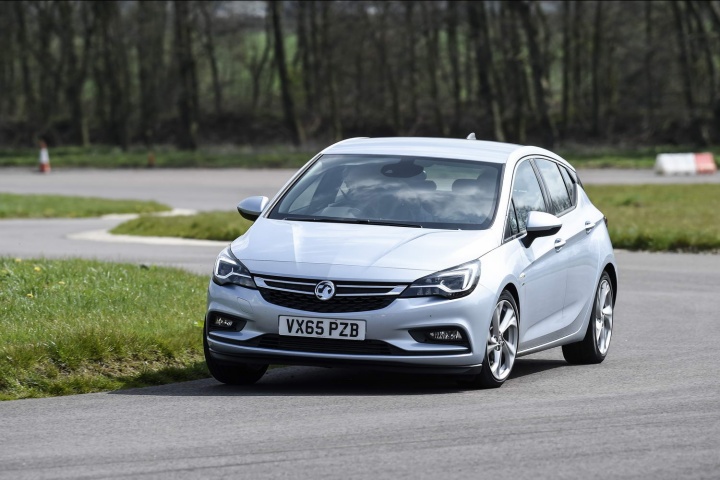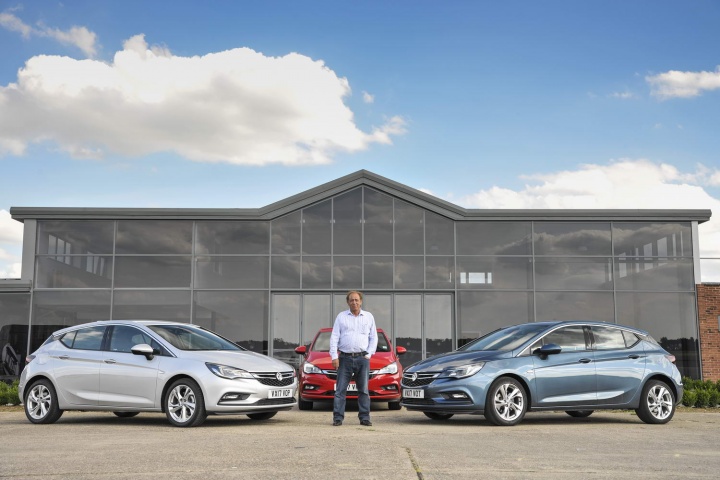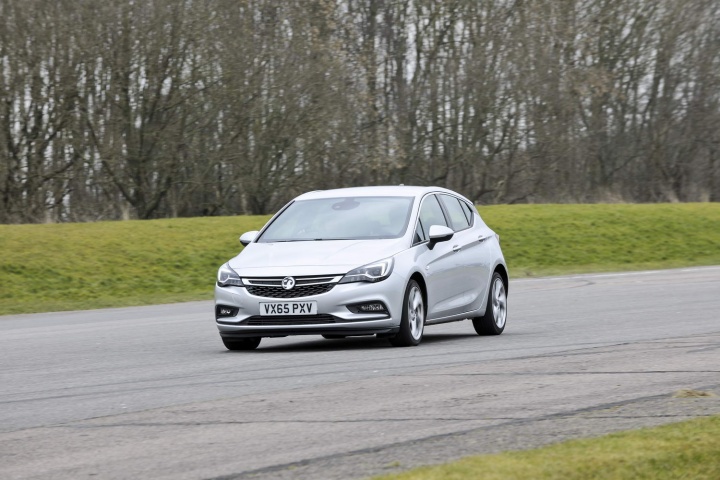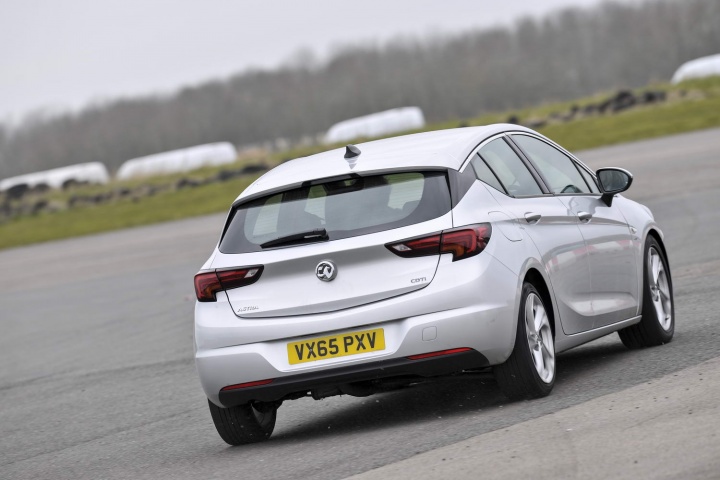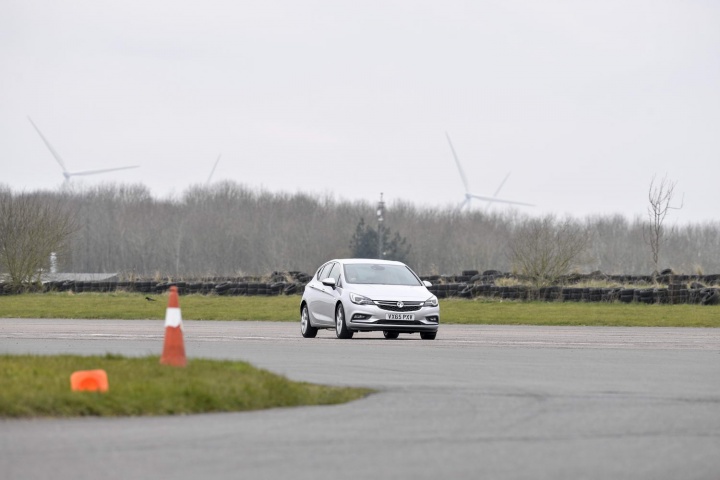A little scene setting is needed here. I get a call from Vauxhall's PR department in the UK asking if I'd like to do some driver training with Rob Wilson. Now Rob, as it turns out, has already trained more than half of the current grid of Formula One drivers and countless more besides. Many big (race-winning) names go back and see him a few times a year and several race teams have booked him out for weeks at a time to learn his techniques and educate their drivers and engineers. That hints at Rob's frankly unorthodox methods and theories on the subject, but the stopwatch doesn't lie. And neither does his order book.
The Vauxhall link is relatively informal, in that Rob has used regular Vauxhalls for years for his training and now there's an agreement between him and Opel's British alter-ego to use its cars while allowing people like me to experience the coaching first hand. It may come as a surprise that all the training is carried out in a standard Astra, no matter who you are. Even the F1 prima donnas. Vauxhall uses it as an unscientific durability test as the cars are mercilessly pounded around the track. We go through more than one set of tyres in a morning, for example, and the brakes are regularly checked and replaced, but apparently, nothing else ever breaks.
Rob is adamant that it's the right way to do things (using a regular road car), for several reasons. First, the speeds are lower, so there's time to observe, react and analyse what's going on at all times. Because of the modest velocities, there's no need for helmets, either. Finally, and probably of most importance, a road car's suspension moves a lot more than a race car's, so the changes are pronounced and easy to sense and discuss. You see, most of Rob's ideas centre around managing the car's weight distribution and its transition from one state to another, reducing energy-sapping movement and hence increasing speed and improving lap times.
A big part of his teaching involves 'introducing' the car to the next movement, be that turning or braking. He likens it to the actions of the passenger in a racing sidecar, who begins transferring his weight before the rider himself does anything, the result being a more stable and faster manoeuvre. In a car, under braking, that's done by a relatively gentle first squeeze on the brake pedal, followed by full force. The gap between the two phases is tiny, but it's been shown to work. Part of this is priming the braking system for the full force, but it's also about settling the weight distribution of the car. Apparently, race engineers look at telemetry data and aren't happy unless the driver is hitting 100 per cent force in a very short amount of time, but Rob has proven that his technique leads to faster lap times - and he's not a massive fan of modern motorsport's obsession with endless data.
Another example of a disconnect between looking at raw data and Rob's technique comes from what he calls 'short corners'. I, like many that have a small amount of track experience, have always been shown the racing line as a smooth curve from the outside to the apex and back to the outside of a corner again. In racing, drivers looking at reams of data aim for a 'highest minimum cornering speed', but Rob reckons his method, which turns a corner into more of an old 50p piece shape with a series of straights and a sharper, smaller ('shorter') turning section, is faster. Bizarrely, I discover that athletes like Usain Bolt use a similar technique on longer races with turns in them, altering their stride to achieve the same result in the curves. On entry to corners, Rob encourages the two-stage approach for steering, too. So, there's a gentle and slight turn in, fractions of a second before much faster input at the wheel. There are other little tips and tricks he wheels out during the training, but I'll struggle to remember them all now as I write this, a few days after.
Time to leave the theory behind and try it out for myself. The Astra really is quite standard. It's a 1.4-litre petrol model with 150hp, and Rob immediately disables the stability and traction control systems. We're at Bruntingthorpe, a WW2 airfield in the UK that is used as much for storage of cars and old planes as it is testing on the improvised track. It's perfect for such training, though, as there's a vast amount of room, even if the surface is a little coarse and it chews tyres. Rob has altered the layout to his own design with small cones marking out some fiendish and challenging corners. We set out to learn the track initially and he shows me how it's done, putting in a 1:27 time, saying that the car can probably do half a second faster in his hands - or the hands of the Formula One drivers (he won't divulge too much information about them, unsurprisingly).
Passing the 'timing beacon' (it's a mangled traffic cone on the side of the circuit and the stopwatch is on his battered old Nokia phone), it's a flat-out left in fourth, a couple hundred metres of straight, then hard on the brakes, down to second and what feels like walking pace, ninety degrees right, let the car settle before a left-hand hairpin (another cone), then be patient with the throttle, ninety right again, then a long right hander that you soon learn to straighten early and run to the far left of the track for another two hundred metres of sprinting up the hill, at the top end of third gear. There, a plastic barrier shows where the track normally goes, but Rob's circuit requires you go around that, changing down to second (he insists you heel and toe every down-change) sharply turning right, then quickly straightening the car (avoiding the hideous, suspension-killing bump on the left) as you aim for the chicane. The change up to third is actively used to set up the weight distribution of the car as you take the gentle right, then left, then flat out and follow the curve of the grass on the right as you eye up the next section.
This is one of the trickiest and, initially, the most unnatural. There are two small cones marking a 'gate' of sorts that you need to go through, but they appear to be almost on the same line as you're travelling in. It requires a gentle dab on the brakes for the merest of seconds, followed by the tiniest, fastest movement right of the steering wheel, then straighten it up and onto the main runway for a breather. Getting this all right is highly satisfying and incredibly effective.
Before long, it's time to brake hard down to second and turn hard right around a cone to the grass where there's just enough room between it and another cone. Here, it's tempting to get on the power nice and early and smoothly run out wide, but he stops me every time and reminds me about 'short corners', encouraging me to leave the throttle at just ten per cent until the car is straight again, instead aggressively turning the wheel so the car quickly finishes with the rotating part. Then it's a quick blast to another straight forward looking cone gate, but you need to turn ninety-right through it. Too much throttle on the exit of it summons up untidy wheel spin and time is lost getting into the last corner of the track. This has been resurfaced recently, so it's a wide expanse of new tarmac, a long and slightly off camber right hander with a wide exit. He says get into third and 'drive with your feet', meaning balance the throttle and grip levels, then we're past the timing beacon again and he tells me I managed a 1:37 'or so' on my first timed run once up to speed and comfortable with the direction the track goes. That's rather a big gap...
We spend about three hours on track (interspersed with tyre changes and cool down laps to help conserve the brakes) with me at the wheel and him calmly reminding me of the techniques when I inevitably forget everything and resort to my old way of doing things. My times quickly drop, though, and what's more, I begin to appreciate the gains he's teaching me, metaphorically kicking myself when I don't get it quite right. Slowly but surely, he's giving me less instruction and it's all sinking in. Alas, all good things come to an end and I could have stayed there for another three hours, gladly. He's seemingly enjoying himself too and admits that he gets a huge kick out of seeing his students progressing. He shows me his 'stopwatch' on my last run and beams - 1:29.5 - after only a short session.
Rob's techniques are not normal, even in an industry that's always looking for the minutest of gains. To experience them first hand has been eye-opening, a glimpse into the high-octane motorsport world from the driver coaching point of view. That it's all done at the wheel of a humble Astra makes it all the more fascinating.

